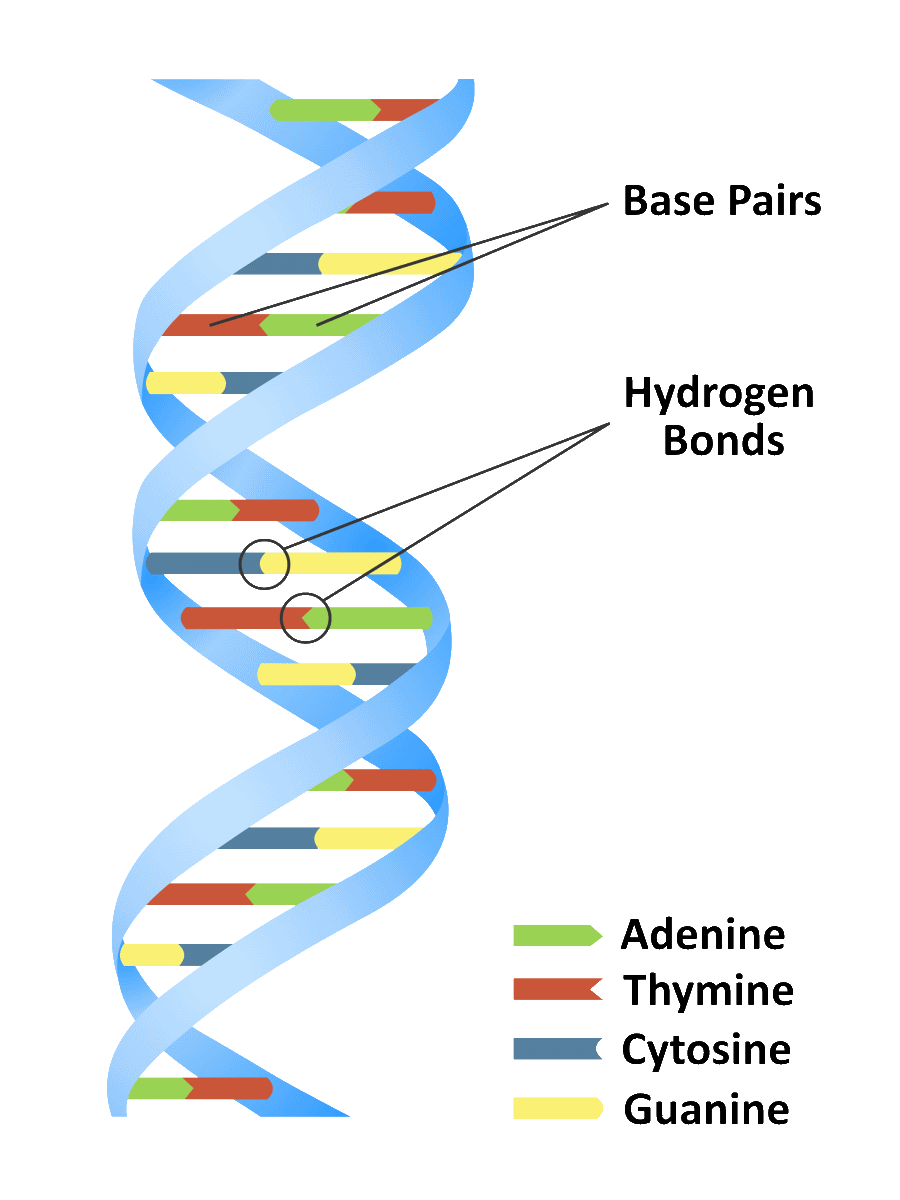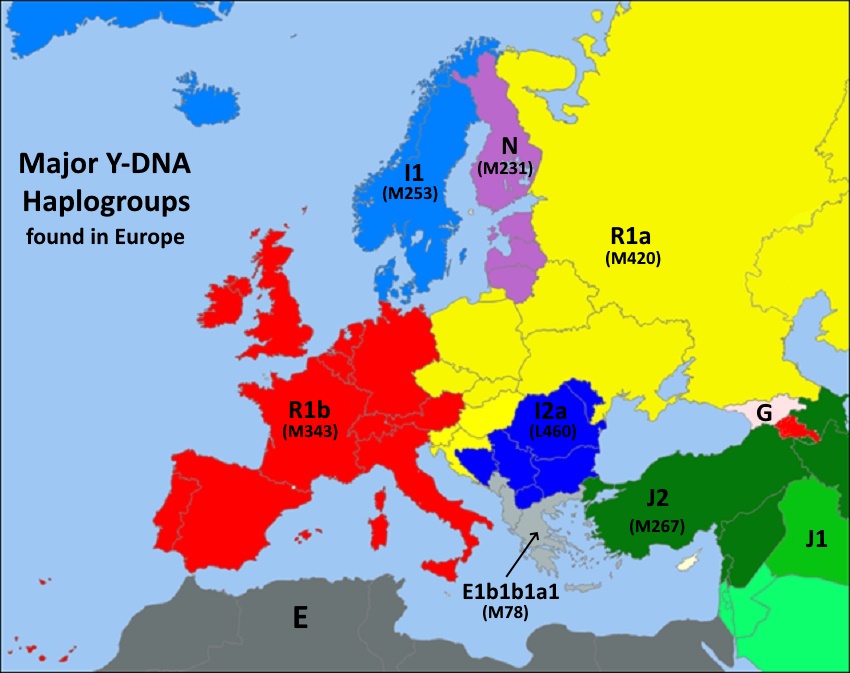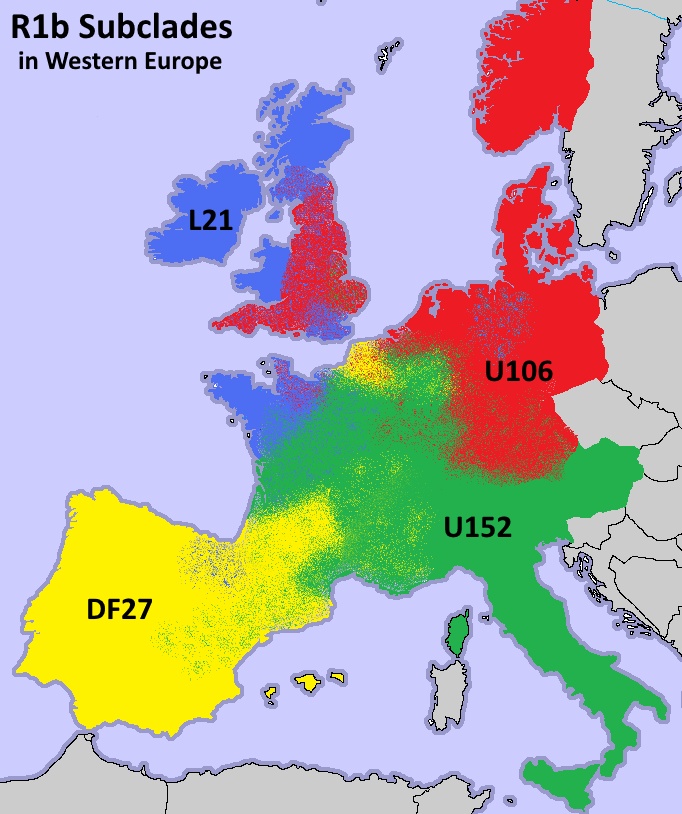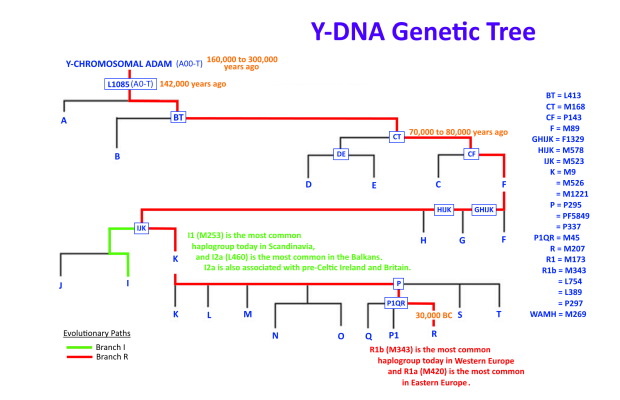|
APPENDIX 2:
"Haplogroups" are, in a sense, genetic fingerprints that characterize a group of people. For example, Ireland has several regions in which there are groups of ancient families who have lived in their same region for generations, and in which the Y-DNA of male members from their regional group is genetically distinct from the Y-DNA of men living in other regions. These genetically-defined, local populations are known as "Y-DNA haplogroups". There are also "MT-DNA haplogroups", but these are based on mitochondrial DNA intead of chromosomal DNA. The "haplo" prefix in the above cases refers to a single chromosome, as in the Y-chromosome that only men carry. It can also refer to the mitochondrial DNA that we all carry, irregardless of gender. By contrast, "diplo" refers to a pair of chromosomes, as in the diploid chromosomes that are examined in an autosomal DNA analysis, where one of the chromosomes is passed on from a father to his child, and the other chromosome comes from the child's mother. 
Men contain within the DNA molecule of their Y chromosome thousands of basic, functional units that are known as genes. Some of these genes determine physical traits, such as eye color, whereas other genes may control body functions. However, most genes appear to do nothing at all. Alleles are simply variants of genes, such as variants of the genes that control eye color, and they result from the presence of inherited mutations. In other words, alleles are alterations of the original gene that evolved over generations. Although the mutations that transform genes into alleles are infrequent, and therefore rare, they account for much of human diversity. Also, because the mutations that create alleles are subsequently passed down from parent to child over the generations, they form a genetic record that we can use to characterize haplogroups. "Haplotypes" are genes and alleles that tend to be inherited as a single group by people sharing the same ancestry. Haplogroups differ from haplotypes in that they are larger, more inclusive units containing one or more haplotypes. For example, a haplogroup would include not only a given haplotype, but also the parent haplotype that it evolved from, its grandparent haplotype, and so on and so forth going all the way back to the defining haplotype of Haplogroup L1085, which is the haplotype from which all subsequent hapotypes probably diverged, and which probably evolved more than 140,000 years ago. Mutations not only transform genes into alleles, but they also change one haplotype into another. Thus, the presence or absence of certain mutations form the basis by which different haplotypes are identified. These mutations are known as "single nucleotide polymorphisms", or "SNPs". Thus, identifying the SNPs in a sequence of DNA is how we identify haplotypes, in order to ultimately characterize haplogroups. Another way of looking at SNPs is to consider them as locations on a DNA molecule where the composition has changed. In other words, an SNP is where a mutation has taken place. A DNA molecule is shown on the right, and it is made up of building blocks called nucleotides, of which there are four - Adenine, Thymine, Cytosine and Guanine. Each nucelotide is joined to another to form a "base pair", and the simplest way to create a mutation, and thereby also create an SNP, is to simply remove one of the "base pairs" from the DNA molecule. Haplogroups also represent branches on a "Y-DNA genetic tree". The so-called "Y-chromosomal Adam", who is the common ancestor of all men alive today, sits at position A0 at the top of this tree. Then branching down from him are the haplogroups of all living men. Because members of a haplogroup share a common ancestor, the haplogroup branches on this tree are also clades and subclades, where a clade is a major branch, and subclades are minor branches below clades. Branching down from Y-DNA Adam is the R1b branch (Major Haplogroup M343), which is the clade that most people in Europe belong to. Then branching down from M343 is the M269 Haplogroup, which is the R1b subclade that is most common in western Europe. Continuing down from M269 is the L21 Haplogroup, beneath which are various Irish and Scottish haplogroups (L21 subclades), some of which we discuss more fully under "Celtic Haplotypes of Ireland". The maps below show the major haplogroups found in Europe today, and the most common subclades of the R1b Haplogroup.
Maps of Major Haplogroup Distribtions in Europe
|
 A Short Introduction to Y-DNA Haplogroups
A Short Introduction to Y-DNA Haplogroups 



